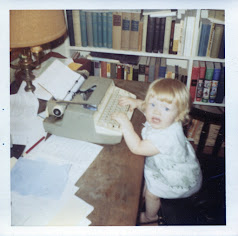I thought that I would have this post up early last week but I have had an awful cold that really knocked me flat! I wasn't even able to finish reading this chapter until Monday.
Anyway, now that things are returning to normal, I was able to finish the chapter and watch a replay of the hangout while reading the homework submitted by the panelists.
Chapter 4 - Assembling Components into Clear Citations
Reference:
Jones, Thomas W. " Assembling Components into Clear Citations." In Mastering Genealogical Documentation, 37-48. Arlington, VA: National Genealogical Society, 2017.
The topic of Quebec church records was actually discussed in this week's hangout because panelist Dave Robison used one of these records as an example in his homework. There was some discussion of the record itself, but mostly it was about the citation.
Also in the study group was a very interesting discussion about whether or not to include the website in citations for census and other widely available records. It turns out that at least some journals have been omitting this information for years. My opinion, based on the study group discussion (you can register and view here) and my own experience is that it depends on your audience and their knowledge of genealogical records and repositories and also on whether the repository matters to the quality of the image. For instance, in my own research, I have found more legible copies of some Canadian census records on the Library and Archives Canada website than on Ancestry. If I were citing one of those records, I might want to point the reader toward the more legible copy.
This is just one example of the most important point made in this chapter; clarity for the reader is the most important factor in assembling a citation. No rigid format, no one template is the answer for every citation. The researcher/author knows the source the best and must point the way for others but not in a one-size-fits-all manner.
As addressed in the Genealogy Standards(1), however, there is certain information that should always be captured in a citation, if known: who, what, where, when, and many times wherein.
I'm still very uncomfortable creating citations, but I'll give it a whirl with a document that should be straightforward enough.
Death Certificate of Benjamin Smith, my 2nd great-grandfather:
 |
| Both sides of the certificate copy with the citation digitally added in Paint. |
Who - who created the document? State of New Jersey Bureau of Vital Statistics
What - What is the document? Death Certificate No. 1769
When - When was the document created? 1908
Wherein - Where in the death certificates of 1908 is the document? Benjamin Smith
Where[is] - Where is the document now? New Jersey State Archives, Department of State, Trenton.
So, those are my elements, here is the full citation.
1. New Jersey Bureau of Vital Statistics, Death Certificate No. 1769 (1908), Benjamin Smith; New Jersey State Archives, Department of State, Trenton.
Most of the other examples I have are either privately held items or were the result of online research and I'm not feeling ready yet to get into online records, so I'll leave it at that for today, except to say, that the chapter covers much more material than I did here in my post. You'll learn a lot more from Dr. Jones and DearMYRTLE's panelists than you will from me, at least for now. So buy the book and watch the hangouts!
(1) Board for Certification of Genealogists, Genealogy Standards (Nashville, Tenn.: Ancestry.com, 2014), 7, for standard 5, "Citation Elements."






Thanks for the step-by-step breakdown of how you assembled this citation. Much appreciated! I'm following along as you blog about the study group, and enjoying the process.
ReplyDelete